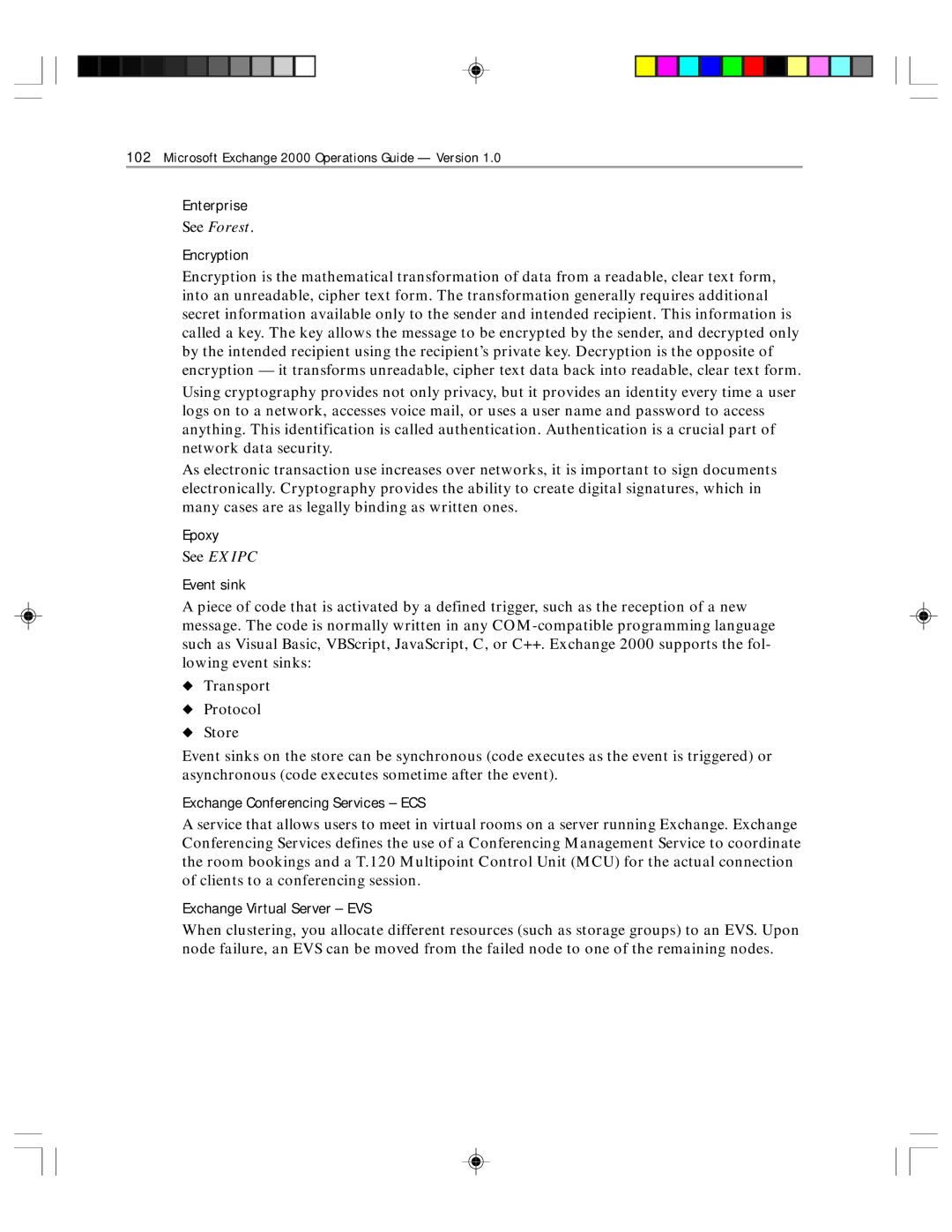
102Microsoft Exchange 2000 Operations Guide — Version 1.0
Enterprise
See Forest.
Encryption
Encryption is the mathematical transformation of data from a readable, clear text form, into an unreadable, cipher text form. The transformation generally requires additional secret information available only to the sender and intended recipient. This information is called a key. The key allows the message to be encrypted by the sender, and decrypted only by the intended recipient using the recipient’s private key. Decryption is the opposite of encryption — it transforms unreadable, cipher text data back into readable, clear text form. Using cryptography provides not only privacy, but it provides an identity every time a user logs on to a network, accesses voice mail, or uses a user name and password to access anything. This identification is called authentication. Authentication is a crucial part of network data security.
As electronic transaction use increases over networks, it is important to sign documents electronically. Cryptography provides the ability to create digital signatures, which in many cases are as legally binding as written ones.
Epoxy
See EXIPC
Event sink
A piece of code that is activated by a defined trigger, such as the reception of a new message. The code is normally written in any
◆Transport
◆Protocol
◆Store
Event sinks on the store can be synchronous (code executes as the event is triggered) or asynchronous (code executes sometime after the event).
Exchange Conferencing Services – ECS
A service that allows users to meet in virtual rooms on a server running Exchange. Exchange Conferencing Services defines the use of a Conferencing Management Service to coordinate the room bookings and a T.120 Multipoint Control Unit (MCU) for the actual connection of clients to a conferencing session.
Exchange Virtual Server – EVS
When clustering, you allocate different resources (such as storage groups) to an EVS. Upon node failure, an EVS can be moved from the failed node to one of the remaining nodes.
